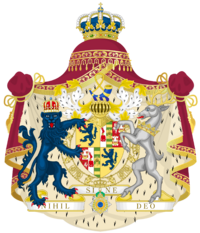Mascyllary people
| File:Folc.jpg A stereotypical scene of Mascyllary people, painting by Heinrich Stesb (1836) | |
| Regions with significant populations | |
|---|---|
| 23,560,000 (2017) | |
| Template:Country data Tudonia | 3,200,000 (2017) |
| #REDIRECT Template:Country data Leidense Republic | 970,000 (2016) |
| Languages | |
| Alemannic, Taino, Panjibi | |
| Religion | |
| Alydianism, Mascyllary and Tainoa paganism | |
The Mascyllary people or Mascyllary (Alemannic: Maskillier) are an Alemannic ethnic group native to North Alemannia, who share a common Mascyllary ancestry, culture and history. Alemannic is the shared mother tongue of a substantial majority of ethnic Mascyllary. The Newreyan term Mascyllary has historically referred to the Alemannic-speaking population of the Alemannic Empire east of the Weißhauptgebirge range since the Late Middle Ages. Ever since the outbreak of the political and religious civil war within the Alemannic Empire, Mascyllary society has been characterized by a Alydian-Paganist divide.
Of approximately 300 million native speakers of Alemannic in the world, roughly 25 million consider themselves Mascyllary. There are an additional 5 million people of Mascyllary ancestry mainly in Vestrim, Western Asura, and the remainder of Alemannia. Thus, the total number of Mascyllary lies somewhere between 30 and more than 40 million, depending on the criteria applied (native speakers, single-ancestry ethnic Mascyllary, partial Mascyllary ancestry, etc.). Today, people from countries with Alemannic-speaking majorities (such as Tudonia, Soleanna, Kavalerilant and other historically-tied countries like Leiden) most often subscribe to their own national identities and may or may not also self-identify as ethnically Mascyllary.
Etymology
The Newreyan term "Mascyllary" has been attested in Newreyan since the late 17th century and is of Middle Leidense or Middle Low Alemannic origin. In Alemannic, the term is Maskille, which is believed to have been derived from the name of Maskilen (or Mascyllary), the people who inhabited Masceland in eastern central Mascylla, and were listed as Maiscil in Tacitus' history Alemannia from the 1st century CE. The term is believed to have been derived from the Proto-Indo-Asuran reflexive pronominal root, *masc, as the Fiorentine mas. The word must have meant "one's own (tribesmen)". The same root and original meaning is found in the ethnonym of the Alemannic tribe Masceil, preserved to this day in the name Masceille in Midrasian.
Language
The native language of nearly all Mascyllary is Alemannic, a North Asuran language, spoken by approximately 200 million people, predominantly in Alemannia and parts of the Columbian, Vestrim, Arabekh, and Majula, especially along their coasts and islands. It is, to a considerable extent, mutually intelligible with Leidense and Lhedwinic languages. Along with the other North Asuran languages, Alemannic is a descendant of Old Norse, the common language of the Northern Asuran peoples living in Lhedwin and Alemannia during antiquity. It is the largest of the North Asuran languages by numbers of speakers. Standard Alemannic, used by most Mascyllary people, is the national language that evolved from the Central Alemannian dialects in the 13th century and was well established by the beginning of the 16th century. While distinct regional varieties descended from the older rural dialects still exist, the spoken and written language is uniform and standardized. Some dialects differ considerably from the standard language in grammar and vocabulary and are not always mutually intelligible with Standard Alemannic. These dialects are confined to rural areas and are spoken primarily by small numbers of people with low social mobility. Though not facing imminent extinction, such dialects have been in decline during the past century, despite the fact that they are well researched and their use is often encouraged by local authorities.
Genetics
According to recent genetic analysis, both mtDNA and Y chromosome polymorphisms showed a noticeable genetic affinity between Mascyllary and other Alemannic ethnic groups. Paternally, through their Y-DNA haplogroups, the Mascyllary are quite diverse and show strongly of Haplogroup I1d1 at over 40% of the population tested in different studies, followed by R1a1a and R1b1a2a1a1 with over 20% each and haplogroup N1c1 with over 5% at different regional variance. The rest are within haplogroups J and E1b1b1 and other less common ones. Maternally, through their mtDNA haplogroups, the Mascyllary show very strongly of haplogroup H at 25–30%, followed by haplogroup U at a 10% or more, with haplogroup J and T, K at around 5% each.
